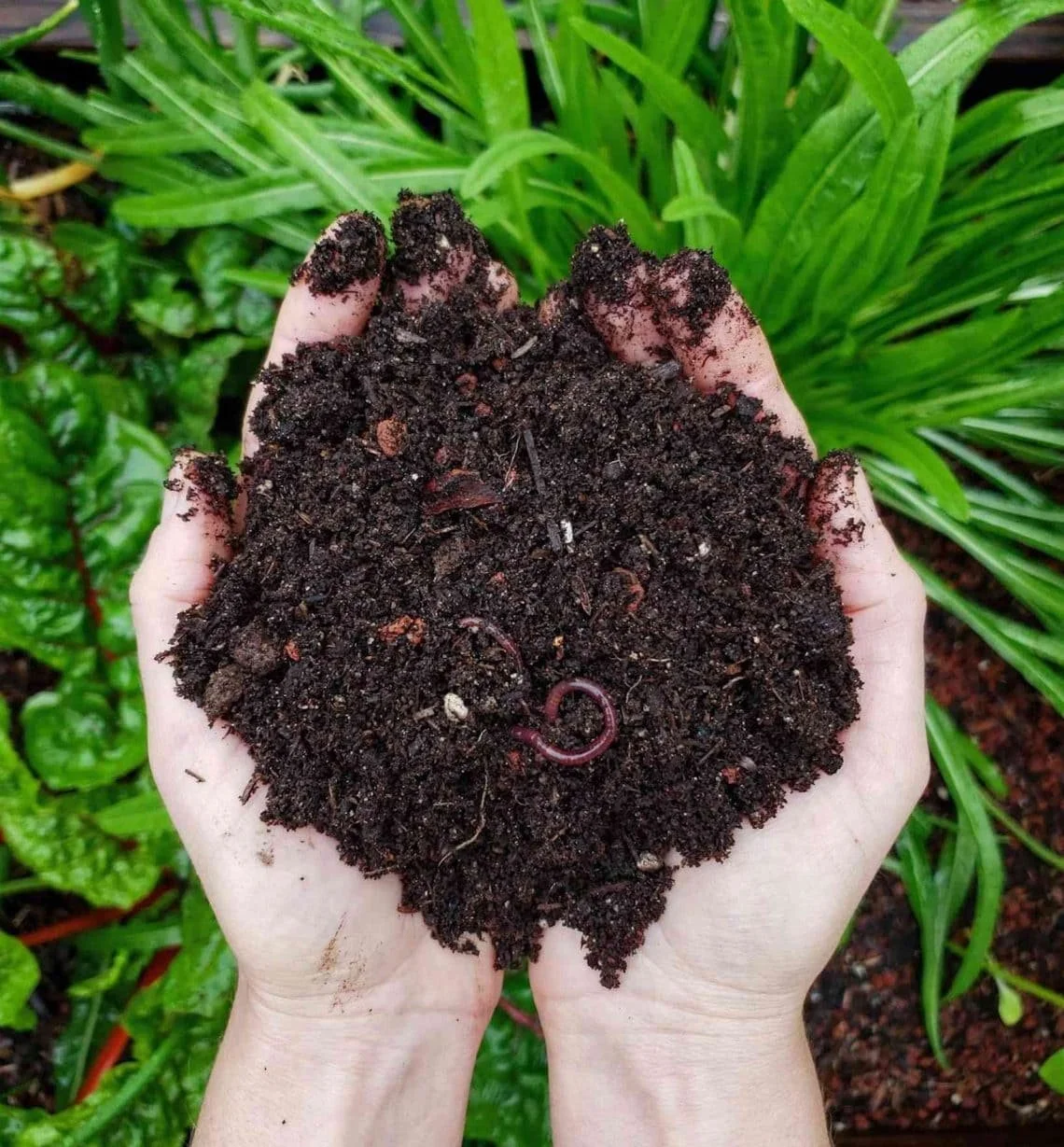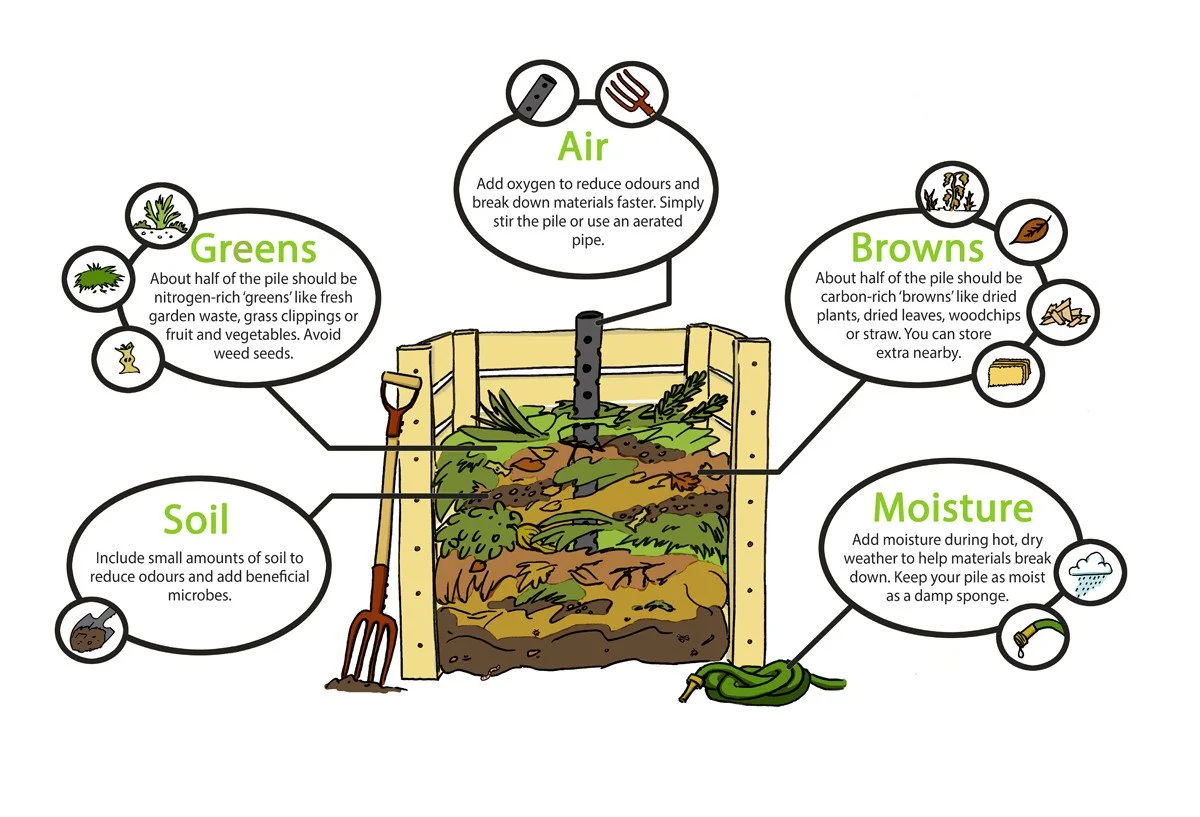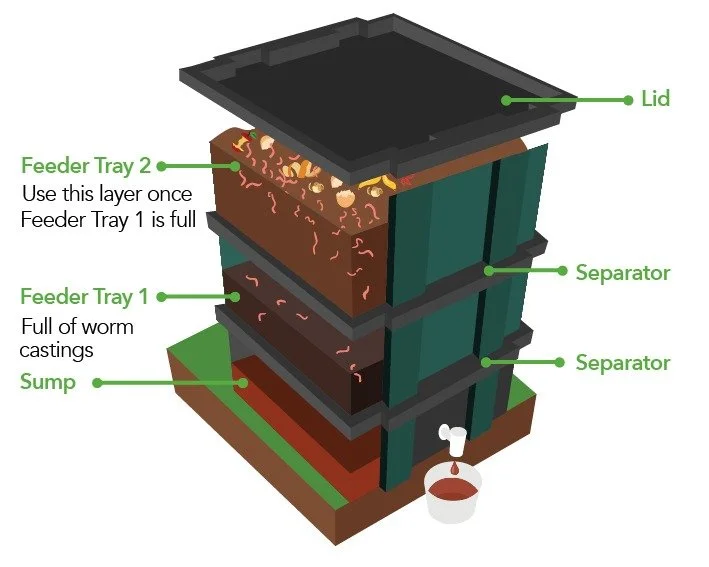What is Composting?
Composting is a natural process by which organic material breaks down and decomposes to create a nutrient rich fertilizer that can be added to soil to help plants, flowers or crops grow. Instead of buying fertilizer, consider composting at home to save money and reduce waste!
Compost benefits your property by:
Returning vital nutrients to the soil that improve plant health and growth.
Improving soil texture, water retention and drainage.
Eliminating the need for harsh chemical fertilizers.
Compost benefits the environment by:
Reducing stormwater runoff on your property.
Reducing your waste and extending the life of current landfills.
Saving fossil fuels used to transport organic waste to landfills.
what factors are needed for healthy compost?
The micro-organisms living in your compost pile need the following to survive:
Food: You can put two main types of organics into your compost bin: green materials and brown materials. Alternate between green and brown material, using 3 parts brown material to 1 part green material. Finish with brown materials to deter pests and reduce odor.
Greens (Nitrogen / wet materials): fresh leaves, plant cuttings, weeds, grass clippings, fruit and vegetable wastes, coffee grounds and tea bags
Browns (Carbon / dry materials): dry leaves, dead weeds, clipped brush, cardboard, paper, wood ash, eggshells, sawdust, woodchips, straw, bread
What to leave out: meat, bones, dairy, oil, diseased plant materials, weeds that can grow from cuttings, human and pet waste
Water: Water your compost bin to keep material slightly moist.
Air: Using a shovel or pitch fork, turn your pile every 1-2 weeks.
What set-up is right for you?
There are a variety of ways to compost on your property, making it easy to choose a set-up that will work best for you and your yard. Below are the most common composting methods:
Example of a compost tumbler set up at the Perkiomen Watershed Conservancy headquarters
Compost Tumbler: Provide a closed container for storing compost. They come in a variety of sizes and styles and are very popular in suburban and urban areas.
Ideal for limited space!
You can make your own or purchase a premade tumbler.
The right combination of matter is critical or the tumbler can turn into a smelly mess or a hard lump.
If not insulated, compost tumblers will only work in the summer.
Makes turning the compost easy.
Since they are smaller, you will be limited on what can fit inside. You will need to break up larger items to fit them in the tumbler.
Example of a 3 bay, open air composting set up
Open Air Composting: The traditional composting method! Can be done successfully without any type of container. Composting bays can also be made at home to help contain your materials.
Great low cost option!
Usually involves constructing 2 - 3 bays in order to rotate compost piles and allow time for the composting process to work.
Requires more space and maintenance than other options.
Can smell and attract flies if it is filled with the wrong materials and not turned regularly.
Turning the compost to aerate is an essential part of the process and takes more work than a compost bin or tumbler.
Ideal for a farmer or someone who has space and lots of green waste to mulch with farm animal excrement.
Example of a vermicomposter
Indoor Worm Composting (Vermicomposting): Method of using worms to transform your organic waste into nutrient-rich fertilizer.
All you need to start vermicomposting is a compost bin, some dirt and some worms! Add your soil and worms to your compost bin and start feeding them your kitchen waste.
You can build your own indoor compost bin (using storage totes) or buy a premade bin.
Fast results with less odor than regular composting.
Great option if you don’t have the outdoor space for other methods.
Requires regular monitoring and turning.
Indoor compost bins have a smaller capacity than outdoor options.






